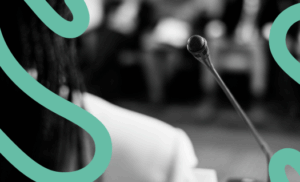We already know that in the world of digital marketing, audience segmentation and understanding are essential for success. In this regard, psychographic profiles have become an essential tool. We will explore what psychographic profiles are, how they can be applied in marketing, and the similarities they share with behavioural marketing.

What are Psychographic Profiles in Marketing?
Psychographic profiles go beyond traditional demographic data.
They analyse psychological and behavioural aspects of the consumer.
These profiles are constructed from data on:
- Beliefs and values.
- Interests and lifestyle.
- Attitudes, motivations, and opinions.
This provides a more comprehensive and accurate view of the target audience.
Examples of Psychographic Profiles in Marketing
Eco-conscious vs. Traditional Consumers:
Eco-conscious vs. traditional consumers
In fashion, some consumers value sustainability and ethical production, while others prefer traditional fashion and classic brands.
Example:
Patagonia has focused its strategy on attracting eco-conscious consumers.
With campaigns such as ‘Don’t Buy This Jacket’, it promotes sustainability and responsible production, connecting with an audience committed to the environment.
Tech Enthusiasts vs. Tech Conservatives:
Technology brands can distinguish between those who seek constant innovation and those who prefer tried and tested, reliable products.
Example:
Apple attracts innovators and early adopters.
Samsung, on the other hand, appeals to those who value reliability and durability.
Health Enthusiasts vs. Food Lovers:
In the food sector, there are two distinct profiles:
- Those seeking healthy options.
- Those who enjoy more indulgent culinary experiences.
Example:
Subway has focused its message on health-conscious consumers, highlighting its ‘healthy fast food’ offering with fresh, customisable ingredients.
Adventure Travelers vs. Relaxation Travelers:
Travel agencies can segment their audience according to the type of experience they are seeking.
Example:
REI Adventures focuses on adventurous travellers, offering hiking and climbing excursions.
In contrast, Sandals and Beaches promote relaxing, luxurious beach experiences.
Culture Enthusiasts vs. Sports Fans:
In entertainment, consumers can be divided between those who enjoy theatre, museums and documentaries, and those who prefer live sporting events.
Example:
The National Geographic Society attracts curious minds and cultural explorers.
Nike inspires athletes through campaigns featuring athletes and messages of empowerment.
First-time Moms vs. Independent Professionals:
Familiar brands can create profiles based on the needs of each type of mother.
Example:
BabyBjörn targets new mothers who are looking for safe and practical products.
IKEA appeals to professional parents who need functional and modern solutions for the home.
How to Use Psychographic Profiles in Marketing
Research and analysis:
Collect data on your current customers and use surveys and social media analysis to understand their values, interests, and behaviours.
Advanced segmentation:
Divide your audience into groups based on the identified psychographic profiles. This allows you to create specific strategies for each segment.
Relevant content:
Create content that resonates with each psychographic profile. Use language, images, and messages that connect with the motivations and values of each group.
Personalisation:
Use information from psychographic profiles to personalise your marketing campaigns and messages. This will increase the relevance and effectiveness of your efforts.
Similarities with Behavioural Marketing
While psychographic profiles and behavioural marketing have different approaches, they share some key similarities:
1. Focus on behaviour:
Both psychographic profiles and behavioural marketing aim to understand and predict consumer behaviour. While the former focuses on underlying motivations, behavioural marketing looks at past responses and actions.
2. Customisation:
Both approaches aim to personalise interactions with consumers. Psychographic profiles do this by adapting content to psychological characteristics, while behavioural marketing personalises based on a user’s previous behaviour.
3. Improving relevance:
Both psychography and behavioural marketing seek to increase the relevance of communications with consumers. By better understanding the audience, more precise messages can be delivered.
Psychographic profiles are a valuable tool in the arsenal of digital marketing.
By combining an understanding of consumer psychology with message personalisation, brands can connect more effectively with their audience and enhance the effectiveness of their strategies.
Like behavioural marketing, this methodology is about adapting and responding to the changing needs and desires of consumers in the competitive digital world.










